Secrets of growing and caring for Bauer begonia at home
To date, many varieties and hybrids of the plant called "begonia" have been bred. This is the brightest and most common indoor plant, the species of which can be recognized either by its bright flowers or by its patterned petals. Among begonias, one can distinguish: lianas, dwarf shrubs, eipiphytes.
Content:
- Description of begonia bauer
- How does the breeding of begonia bauer
- How to care for begonia bauer
- Bauer begonia diseases
Description of begonia bauer
Begonia takes its roots from the tropics of Africa and Asia. Among species of this plant Bauer's begonia is especially prominent. This hybrid is obtained as a result of repeated crosses, and the origin of the plant is noted in 1977. Since then, begonia has been in demand among lovers of home flowers and gardeners.
Features of begonia:
- Begonia Bauer is a bush that reaches a height of up to 30 centimeters.
- Its peculiarity is small dark green leaves with a pattern in the form of red and light spots. Why begonia has another name - tiger.
- The second feature of begonia is the presence of white hairs along the edges of the plant.
- What color its leaves will have depends on how bright it is in the room where it is kept.
- The plant also has flowers. They are white in color and bloom in small inflorescences that take their origin directly from the root.
The rhizome itself is located on the surface of the pot. The flowering process is inherent in this plant only in winter, and it is characterized by the presence of a bright color.
Due to its southern origin, Bauer begonia is very demanding:
- She needs an analogue of the conditions from which her story begins. Namely, the presence humid air and high temperature about 20 degrees.
- Although the prevailing opinion about the ability of a plant to adapt to any conditions, but a warm environment suits it best.
- If a bright light is directed at it, then the color of its petals will be lost, but the number of flowers will greatly increase. Therefore, the best option would be diffused light falling on the plant.
The plant prefers places such as a balcony for its growth.
When it comes to being in the country or in the park, a cool place, sheltered from the wind, is best. A little shading will also not interfere with the plant. Begonia is not able to get along with all plants, so you need to pick them up from those that have already proven themselves. Ideal neighbors would be:
- Lobelia.
- Balsam.
- Nemesia.
As for watering, then it must be remembered that begonias in a cool room pass very sparingly.
How does the breeding of begonia bauer
IN the breeding process of begonia Bauer is not demanding. And this happens without any difficulties.
There are several ways:
- Leafy cuttings.
- Apical cuttings.
- With the help of rhizome particles.
Consider a method of reproduction using rhizomes. This will require the availability of suitable soil in a pot, where the rhizome will be planted. Before that, it is necessary to cut off the tops from the rhizome. If there is a serious strengthening of the rhizome, then the plant is divided.The rooted part is disconnected from the plant and transplanted into a special pot. In this pot, the soil should be composed of peat and sand. Then the pot is covered with a cellophane covering, which has special holes for ventilation.
Now let's look at how propagation occurs using cuttings:
- This type of breeding can be carried out both in summer and spring.
- From an adult plant, a small leaf (intact) is cut off, having a cutting 5 centimeters in size, and immersed in the soil by half.
- The soil should be composed of wet peat, sand and a mixture of perlite.
- All these components must be in equal proportions in the pot.
- After dipping a leaf into the soil, the pot is placed in a special plastic bag with holes for ventilation.
- Then the pot is placed in a cool room with a temperature of 17 degrees.
- The pot should be about 7 centimeters in diameter. If it is larger, then several cuttings of the plant can be planted there.
The first shoots will appear only after a month and a half.
Sometimes it turns out earlier - in a month. After the sprouts appear, you need to wait another month before you can transplant them into separate pots. It is imperative that each sprout has its own pot.
How to care for begonia bauer
Begonia undemanding plant, and caring for it does not present any problem. It also has a very simple reproductive process. And most importantly, quickly - since the bush is formed in a matter of weeks. And besides, with all this, the plant has bright leaves iridescent in the sun. And this is with the minimum cost of his care.
Begonia can adapt to any environment.
But sometimes it becomes necessary to transplant the plant into another pot, which is larger than the previous one. This is usually done in the springtime. The soil for such a pot should be a mixture of earth and peat.
Watering begonias bauer:
- During the transition from spring to summer climate, the plant requires even and careful watering due to its accelerating growth.
- Before watering the plant, you need to make sure that the soil in the pot is completely dry after the previous one.
- In addition, it needs to be fed periodically. special complex of fertilizers.
In winter, the Bauer room begonia watering occurs less frequently and is much more economical. At this time, the plant should not be fed.
The soil in the pot should not be too wet, not too dry. In no case should you water the plant itself. This will only lead to disease of the petals and flowers.
Transplant and rejuvenation:
- Begonia bauer should be transplanted every two years.
- From time to time the leaves of the plant are cut off and flower buds are removed, which favorably affects the growth of the leaves.
- It is advisable to store begonia separately from other plants.
- If there is a need to combine it with other varieties, then you need to transplant them into one container.
- Only undersized varieties are used.
Bauer begonia diseases
The plant needs protect from all kinds of pests... It is also susceptible to various plants.
Pests include:
- Felters.
- Aphid.
- Rot.
Aphids are small parasites that suck the juices from a plant:
- By doing so, they seriously harm him.
- They especially prefer places located on peduncles.
- They can also be found on the stem of the plant.
- To eliminate parasites, it is necessary to direct them with a strong stream of soapy water.
- The main thing is not to damage the plant itself.
- If the affected areas remain after the aphids, then they must be treated with a special insecticidal solution.
Rot looks like gray mold found in areas of the plant. It usually occurs on the rhizome, thereby weakening it. With this ailment, it is not worth it water the begonia abundantly... In this case, it is necessary to provide it with a suitable temperature.
The formation of white lumps in areas of the plant leads to its destruction.
This type of pest is called felt. In order to eliminate these fluffy growths on begonia, the Bauer must be carried over them with a specially treated cotton swab. For treatment, water diluted with an insecticide is suitable.
More information can be found in the video.




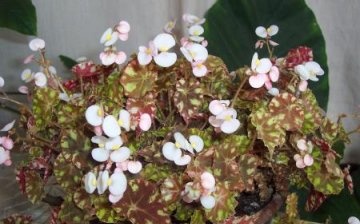








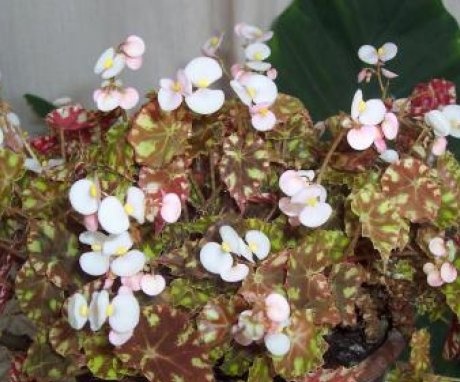
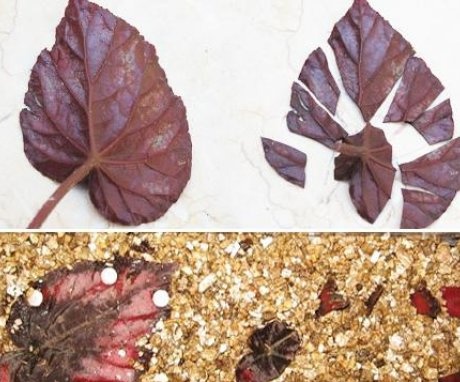
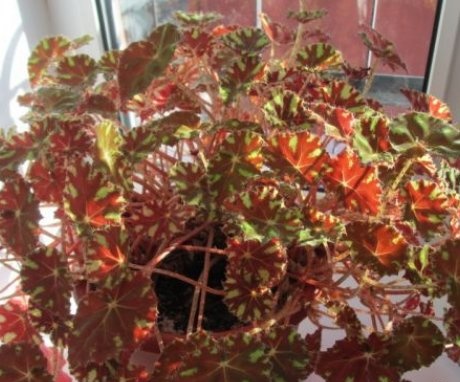
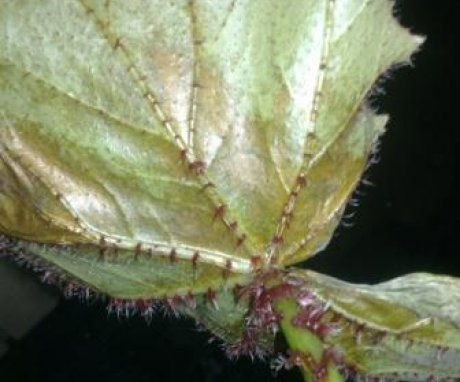
My begonia is already old. Unpretentious plant. Loves water and fresh air. In the warm season, I keep the plant on the balcony. And during the period of pest control, so as not to damage the leaves with a strong jet of water, I make a soap solution in a jar and use a brush to clean the plant.